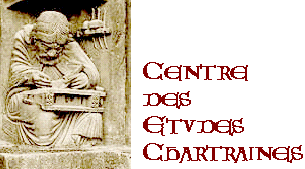
This
Site is Sponsored By : Christopher's
Book Room
(specializing in Books on the Middle Ages)
And is Hosted by the
remarkable Ariadne's Thread.
Nota
Bene: The new material herein is under Copyright.]
 |
|
The
Cathedral of Chartres was the object of a pilgrimage
from at least the ninth century, and, among the tens of thousands of Pilgrims'
souvenirs from sites all over Europe which have survived,
there are several examples of Pilgrims' Badges which appear to have had some sort of connection to the Cult of the Virgin of Chartres have survived. These artifacts are not only witness to the social history of the place, but also may be precious and unique evidence of various iconographic details surrounding the cult of Our Lady of Chartres. |
|
This
page is an attempt to present all of the known pilgrims' badges which
can be confidently
said to be of Chartrain origin or to have some sort of Chartrain connection. The titles (nomenclature) given to these Exemplars are provisional and are based, primarily, on the first publication of them, and, if possible, each face of each badge should be treated as a seperate image, with its own name. Alternative ideas for the naming these artifacts are hereby invited. |
|
During
the course of extensive dredging operations in the river Seine in central
Paris in 1860-63 literally thousands of artifacts of all sorts were recoverered
from the river's silt.
A local merchant, Arthur Forgeais, who had a storefront near the Pont Neuf, was instrumental in the recognition of the importance of these curious artifacts and saw to their publication in a series of volumes which he had printed at his own expense in 1862-5. A total of four badges with an apparent Chartres connection were recovered in 1862 and 1863 and published by Forgeais in the following years. |
|
We have styled the first
of these Forgeais 2-28 :
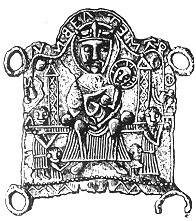
(click on the image for a larger version. Forgeais' accompanying text is here.) |
|
Although it is fitted
with four sewing rings at the corners, there is also an image on the
|
|
A very similar badge, found
in the river Thames, was published over Spencer239b (obverse)
: |
|
This very interesting badge is discussed further here.
Also presumed to be from the 13th century, the badge we have styled Forgeais 4-118:
|
Arthur Forgeais, Collection de Plombs
Historiés trouvés dans la Seine,
Quatrième série: Imagerie Religieuse
(Paris: Chez l'Auteur, 1865), p. 118.
Forgeais 4-115:
Arthur Forgeais, Collection de Plombs
Historiés trouvés dans la Seine,
Quatrième série: Imagerie Religieuse
(Paris: Chez l'Auteur, 1865), p. 115.
The text of Forgeais 4-115 may be read here.
Forgeais 4-120:
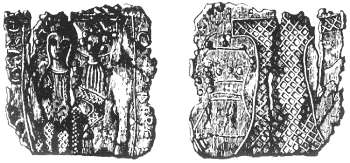
Arthur Forgeais, Collection de Plombs Historiés trouvés
dans la Seine, Quatrième série: Imagerie Religieuse
(Paris: Chez l'Auteur, 1865), p. 120.
Mitchner
Mitchner
|
Arthur Forgeais,
a nineteenth century Parisian merchant, was the Godfather of Pilgrims'
souviner collection in France, if not in all of Europe. |
|
The
local Chartain historian Adolphe Lecocq, in a general discussion of the
question of pilgrimage at Chartres in an article published in the journal
of the local archeological society, discussed the artifacts found by Forgeis,
and added others : |
|
The erudite Anglo-American independent scholar Pippin Michelli has provided us with a brief but brilliant summary of the history and historiography of the several pilgrims' badges from Chartres, in both an article published in a young but promising periodical devoted to "Pilgrimage Arts" (now available in a .pdf file on-line) and in a fine paper read at the International Medieval Conference in Kalamazoo, Michigan, in 2001 : Pippin Michelli, "A Gordian Knot: Notes on Chartres Pilgrim Badges", in Perigrinations. Publication of the International Society for the Study of Pilgrimage Arts, I, ii, July 2002, pp. 2-4. (http://peregrinations.kenyon.edu/vol1-2.pdf) |
|
The foremost British authority on pilgrim
souvenirs was the late Brian Spencer, who, in one of his last publications,
collected a large number of these artifacts in an exhaustive catalogue
of them found in the London area: Brian Spencer, Pilgrim Souvenirs and Secular Badges: Medieval Finds from Excavations in London. London: Stationery Office, 1998. |
|
In other words, we have this stemma of our images : |
|
Special thanks for indispensible help with this page go to Professor Sarah Blick of Kenyon College, Pippin Michelli, Ph.D., and Madame Claire Lebrecque, Conservatrice of Manitoba's fine new Centre du Patrimoine of the Société historique de Saint-Boniface. Please note that none of these accomplished scholars is responsible for any of the errors which might be found herein. |
Please note that this site is
![]()
And
is maintained by
Christopher Crockett
(who absolutely cannot be held
responsible if the above condition is not
rigorously adhered to).
Your input, comments and even (mild, gentle) criticisms
are welcome and solicited.
Write me at:
bccrockett@usa.net
And
with special thanks to Susan R. Dixon,
Creatrice of
![]()
Specializing in :
Web
Designing with the goal of enabling organizations
to transform the way they create and interact with the world.
And sponsor of Medieval
WebArtists, a cooperative project
providing server space for those working with any body of
scholarship about medieval art, history, literature, or life
that they wish to put on the web, an Ideal Home for Scholars
who have no academic affiliation and therefore little access
to stable accomodations for their work.
Meanwhile, this Site is Definitely
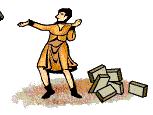
(wait 7 seconds)
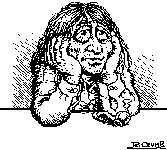
(wait 8 seconds)

2123739